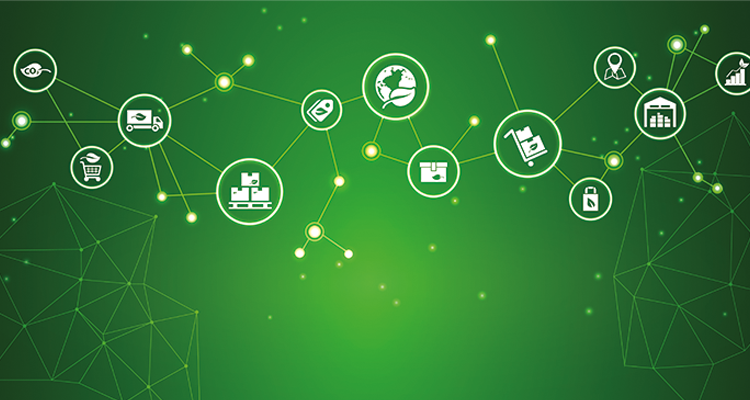What does certifying to ISO 14001 really involve? By David Goodfellow
Responsible supply chain management ensures that suppliers are following effective environmental, social and economic governance practices. Sustainability should play a central role and manufacturers are under growing pressure from stakeholders to consider their environmental impact. To gain a competitive advantage, they must therefore implement systems that benefit the environment, as well as reduce costs and improve efficiency.
For most OEMs, their supply chain’s environmental credentials are intrinsically linked to their own corporate sustainability. Upstream supply chain customers are therefore increasingly demanding that their suppliers identify and quantify environmental aspects themselves, using key performance indicators to identify areas of alignment and opportunities for improvement. To assess the environmental impact of their entire supply chain, many businesses also require suppliers to report results at regular intervals.
ISO 14001 is the most widely recognized environmental management system (EMS) standard in the world. Supply chain sustainability is a key outcome of ISO 14001 certification, as businesses are faced with customer requests to establish and document environmentally and socially responsible practices.
By achieving ISO 14001 certification, an organization demonstrates to stakeholders its commitment among others to prevent pollution, to fulfil its compliance obligations and to strive for continuous improvement of environmental performance. Main features include:
Strategic Environmental Management

A requirement to understand the organization’s context is vital to identify and leverage opportunities for the benefit of both the organization and the environment. Particular focus is on issues or changing circumstances related to the needs and expectations of interested parties (including regulatory requirements) and local, regional or global environmental conditions that can affect, or be affected by, the organization. Once identified as a priority, actions to mitigate adverse risks or exploit beneficial opportunities are integrated in the operational planning of the EMS.
Leadership
To ensure the success of the system, specific responsibilities are assigned to those in leadership roles to promote environmental management within the organization.
Protecting the environment
The expectation on organizations includes commitment to proactive initiatives that protect the environment from harm and degradation, consistent with the context of the organization. ISO 14001:2015 does not define ‘protect the environment’ but it notes that it can include prevention of pollution, sustainable resource use, climate change mitigation and adaptation, protection of biodiversity and ecosystems, etc.
Environmental performance
There is a clear emphasis with regards to continual improvement, from improving the management system to improving environmental performance. Consistent with the organization’s policy commitments, it would reduce emissions, effluents and waste to levels set by the organization, where applicable.
Lifecycle perspective
In addition to the requirement to manage environmental aspects associated with procured goods and services, an organization will need to extend its control and influence to the environmental impacts associated with product design and development to address each stage of the lifecycle, i.e. acquisition of raw materials, design, production, transportation/delivery, use, end-of life treatment and final disposal. This does not imply a requirement to do a lifecycle assessment.
Outsourced processes
Organizations must effectively control or influence outsourced processes.
Communication
The development of a communication strategy with equal emphasis on external and internal communications is required. This includes a requirement to communicate consistent and reliable information, and to establish mechanisms for persons working under the organization’s control to make suggestions for improving the environmental management system. The decision to communicate externally is retained by the organization, but the decision needs to consider the information reporting that is required by regulatory agencies, as well as the expectations of other interested parties.
Documentation
Reflecting the evolution of computer and cloud-based systems for running management systems, the standard incorporates the term ‘documented information’. To align with ISO 9001, the organization retains the flexibility to determine when procedures are needed to ensure effective process control.
While accredited certification to ISO 14001 is not a mandatory requirement, manufacturers can reap many benefits by adopting and implementing the system. With organizations under increasing scrutiny from stakeholders to minimize their environmental impact, ISO 14001 certification demonstrates a strategic commitment to continuous improvement.
A focused approach

The standard uses the High Level Structure (HLS) for Management System Standards (MSS), which is a common framework for ISO management system standards, incorporating identical core text and common terms with core definitions. Examples include ISO 9001 Quality Management, ISO 45001 Occupational Health and Safety Management and ISO 50001 Energy Management.
The framework is designed to benefit users implementing multiple ISO management system standards and is applicable to any management system standard. This allows compatibility across ISO management system standards while offering subject specific flexibility. This means that it is easy to integrate into any existing ISO management system.
By providing a best practice approach, ISO 14001 sets out the requirements for an EMS to help organizations improve their environmental performance, e.g. through more efficient use of resources and the reduction of waste. They can also gain a competitive advantage and the trust of their stakeholders.
David Goodfellow is UK Business Assurance Manager at TÜV SÜD, one of the world’s leading experts in product testing and certification, with 150,000 product certificates in circulation globally. Its Product Service division analyzes over 20,000 products each year in Europe, Asia-Pacific and the Americas, using its technical expertise to help customers optimize market access.
www.tuvsud.com/en-gb/services/auditing-and-system-certification
